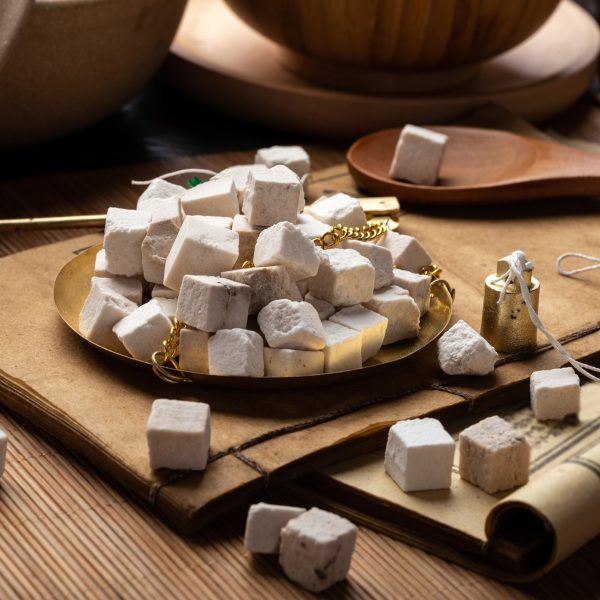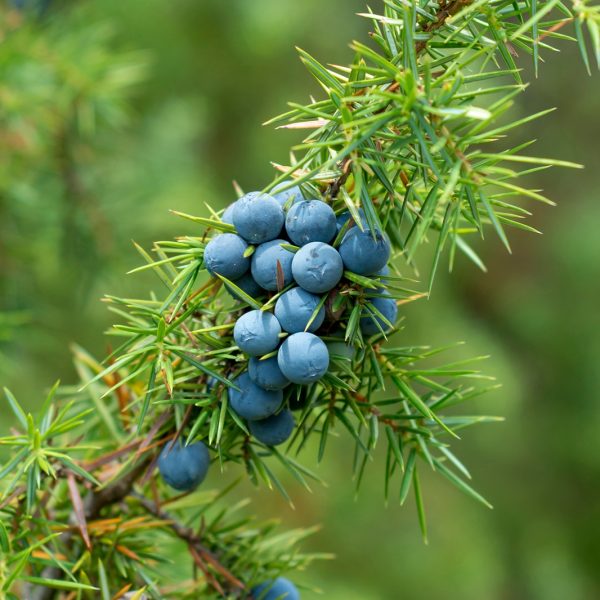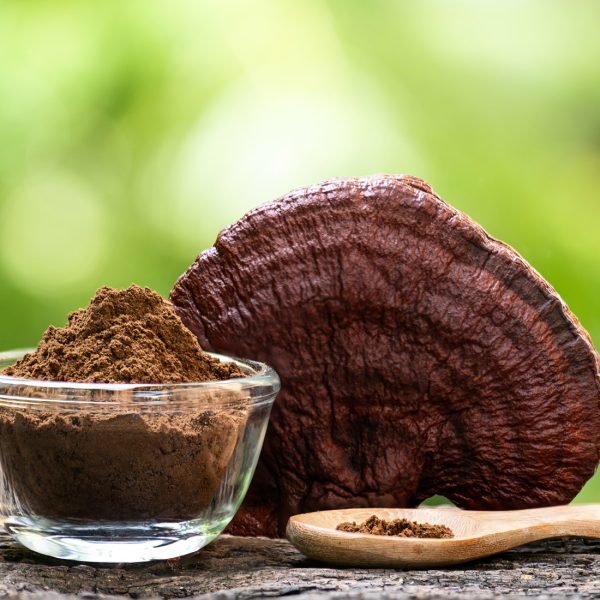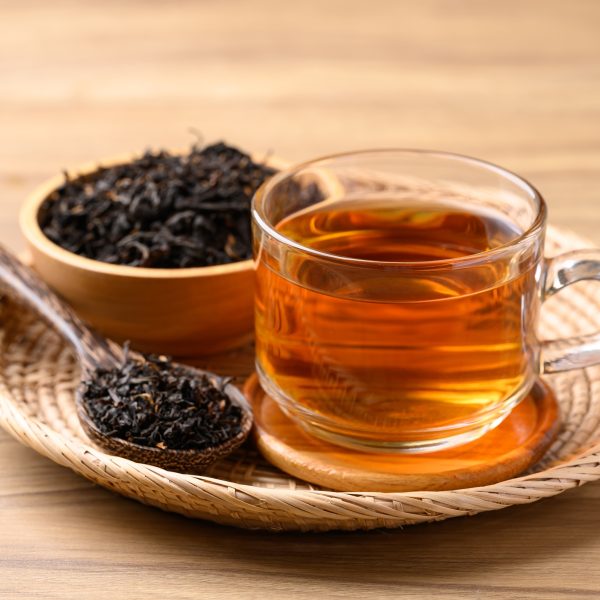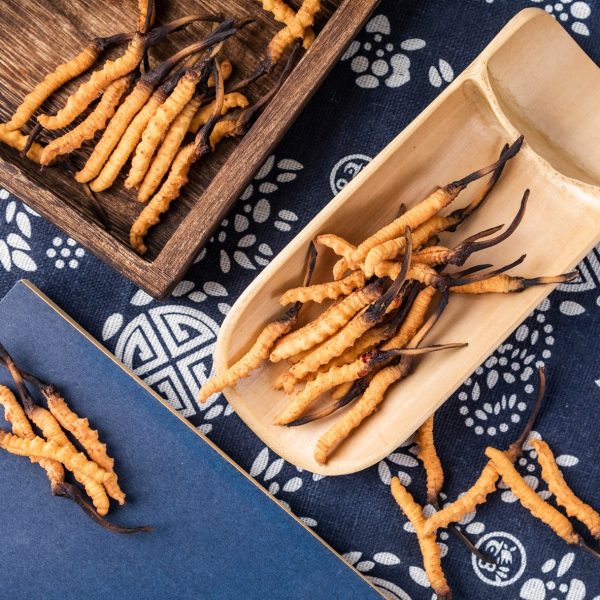-
How does it feel?
-
What can I use it for?
Pain from any source, including musculoskeletal, neuropathic, cardiovascular, digestive and gynaecological disorders, or traumatic injury. It also promotes sleep.
-
Into the heart of corydalis

Corydalis flowers (Corydalis yanhusuo) In Chinese medicine, this herb is said to be acrid and warm, mobilising without conserving (1). This means that it strongly moves stagnant qi and Blood that causes pain, but at the expense of potentially damaging these substances. Therefore, while it is one of the most powerful herbs to use in pain relief, caution and restraint are advised in deficient patients, and it should be avoided for long term use where the strategy should be to find and address the root cause of the pain. If necessary in these situations, formulas that treat pain from deficiency also include herbs that will counteract this effect such as dong quai (dang gui, Angelica sinensis) which nourishes the Blood while also gently promoting its movement, ginseng (ren shen, Panax ginseng) tonifies the qi and generates fluids, or liquorice (gan cao, Glycyrrhiza spp.) which fortifies the Spleen and is used extensively in Chinese medicine to reduce the harmful effects of harsh herbs.
Corydalis’ ability to alleviate pain, and the growing body of research into its many alkaloids, some of which may act on the central nervous system to alleviate neuropathic pain (2,3), have seen this herb become incorporated into Western herbalism and scientific research. Several of these alkaloids have shown promise in in vitro and animal models but there is much debate regarding which is primarily responsible for this effect with it being likely that it is a combination of all alkaloids working together.
-
Traditional uses
In traditional Chinese medicine (TCM) corydalis is a herb that is used to invigorate the blood, promote the flow of qi and reduce pain (1). By eliminating qi and blood stasis, corydalis alleviates pain throughout the body, especially that which has arisen from an obstructive origin. It is also used to promote menstrual bleeding in the treatment of dysmenorrhea (1). Corydalis is used in Chinese medicine for the control of pain, stomach ulcers and assisting sleep.
-
Traditional actions
Herbal actions describe therapeutic changes that occur in the body in response to taking a herb. These actions are used to express how a herb physiologically influences cells, tissues, organs or systems. Clinical observations are traditionally what have defined these actions: an increase in urine output, diuretic; improved wound healing, vulnerary; or a reduction in fever, antipyretic. These descriptors too have become a means to group herbs by their effects on the body — herbs with a nervine action have become the nervines, herbs with a bitter action are the bitters. Recognising herbs as members of these groups provides a preliminary familiarity with their mechanisms from which to then develop an understanding of their affinities and nuance and discern their clinical significance.
-
Traditional energetic actions
Herbal energetics are the descriptions Herbalists have given to plants, mushrooms, lichens, foods, and some minerals based on the direct experience of how they taste, feel, and work in the body. All traditional health systems use these principles to explain how the environment we live in and absorb, impacts our health. Find out more about traditional energetic actions in our article “An introduction to herbal energetics“.
Chinese energetics
-
What practitioners say
Corydalis is currently one of the most popular herbs for pain control in Chinese medicine. Historically, other herbs used which exceed its ability are usually narcotic, toxic or legally restricted and so of limited use to modern herbalists, e.g. opium poppy (Papaver somniferum), marijuana (Cannabis sativa) or datura (Datura stramonium). In contrast, corydalis does not reduce mental functioning but contains over 80 different alkaloids, many of which act on neurological and inflammatory pathways to both reduce pain and the causes of pain (2). This allows it to be used with minimal restrictions and it can be easily combined with other herbs to focus its effects on muscular, neurological, cardiovascular, digestive or gynaecological conditions. Emerging evidence for many of its constituents to alleviate pain and reduce inflammation have also made it a popular choice among Western herbalists (5).
-
Research

Corydalis plant (Corydalis yanhusuo) Pain
A recent review investigated corydalis in the context of pain relief, concluding that several of its constituents had connections to analgesia, including dehydrocorydaline, levo-tetrahydropalmatine, dehydrocorybulbine, berberine, palmatine, oxyacanthine, magnoflorine, columbamine, corydine and corydaline. Although, more studies need to be done on their pharmacokinetics to fully understand their mechanisms (2). There are several potential mechanisms involved including modulation of inflammatory pathways, dopamine and acetylcholine neurotransmitters and their receptors.
Neurological conditions
The alkaloid content of corydalis has been researched in relation to anxiolytic (anxiety reducing), antidepressant, anti-addiction and anti-epileptic properties (6).
Tetrahydropalmatine, tetrahydrocolumbamine and ᴅ-glaucine have hypnotic and sedative effects, while tetrahydropalmatine has also shown anxiolytic effects (7).
Tetrahydrocolumbamine, protopine, jatrorrhizine, glaucine, tetrahydropalmatine, palmatine and dehydrocorydaline have shown monoamine oxidase-A inhibitory activity which modulates many neurotransmitters, including serotonin, dopamine and noradrenaline leading to a potential antidepressant effect (6). Berberine and palmatine have shown hypothalamic-pituitary-axis modulating activity, reducing corticosterone, nitric oxide and inflammation which could interrupt the pathophysiology of depression.
Columbamine, jatrorrhizine, coptisine, palmatine, berberine, dehydrocorydaline, tetrahydropalmatine and corydaline have all demonstrated an acetylcholinesterase inhibitory effect while berberine and palmatine may also be able to reduce the accumulation of tau and 𝛃-amyloid plaques (6). The deterioration of cholinergic transmission and accumulation of these plaques are all features of Alzheimer’s disease.
The interaction of several alkaloids found in corydalis with dopamine receptors has revealed that it may be of use in treating addiction to morphine, cocaine and potentially other addictions (6).Cardiovascular conditions
Three alkaloids found in corydalis, levo-tetrahydropalmatine, palmatine and berberine, have been researched in relation to prevention of ischaemia / reperfusion injury in myocardial and cerebral vascular injury (6). These alkaloids could suppress apoptosis, inflammation and oxidative stress, and modulate autophagy (natural metabolic process of tissue breakdown) and cell cycle arrest to protect myocardial tissue, improve cardiac function and protect the blood brain barrier. In addition, extractions of corydalis can inhibit platelet aggregation to prevent thrombosis and modulate angiogenesis (formation of new blood vessels). Tetrahydropalmatine has also demonstrated the potential to lower blood pressure (7).
Diabetes
Corydalis contains berberine which has been implicated in improving blood sugar profiles in type 2 diabetes with a low incidence of adverse effects or chance of inducing hypoglycemia (8). The berberine content of corydalis, combined with its additional pain alleviating properties make corydalis a potential candidate for managing painful conditions arising as complications from diabetes.
Gastric ulcers
Besides alleviating pain, alkaloids from corydalis have demonstrated effects on gastric ulcer formation, improving the mucosal barrier, improving wound healing and modulating nitric oxide production (6). Palmatine, coptisine and berberine appear to be the main alkaloids responsible for these effects.
Viral infection
Some of the alkaloids present in corydalis have been researched in relation to antiviral effects (6). It has demonstrated inhibitory activity with a number of viruses including hepatitis B, Japanese encephalitis virus, enterovirus 71, Chikungunya virus, HIV-1 and SARS-COVID-1.
-
Did you know?
Yan hu suo means “extended barbarian rope” but was originally called xuan hu suo “dark barbarian rope.” Its name had to be changed when the Kangxi Emperor Xuan Ye ascended the throne and it became taboo to use the character xuan for any other purpose than referring to the emperor. The herb was renamed yan hu suo or occasionally yuan hu suo “primary barbarian rope”(1). Both forms may be used today, but textbooks tend to use yan hu duo.
Additional information
-
Botanical description
yanhusuo is a diploid perennial herb of the Papaveraceae family. The leaves can be two- or three-lobed with racemes containing 5–15 sparse, purple or red flowers. Male flowers have six stamens bundled into two filaments, and female flowers have an oblate columnar ovary, a subcircular stigma and a linear capsule fruit. It flowers during April and fruits from May to June (2).
-
Common names
- Yán hú su (Chinese)
- Engosaku (Japanese)
- Hyeonhosaek (Korean)
-
Safety
Toxicology studies are limited, but Chinese sources advise caution during pregnancy and in postpartum bleeding (6).
High doses of 10–15 g powdered herb may produce side effects of drowsiness, dizziness and abdominal distention. Toxic dose is between 60–120 g and symptoms appear 1– 4 hours after ingestion, including dizziness, facial pallor, drowsiness, weakness, dyspnoea, spasms, low blood pressure and weak pulse. In severe cases there may be shock, tetanic convulsions and respiratory inhibition (1).
At least two cases of liver injury have been reported from sleep aid supplements that used corydalis combined with Cannabis sativa as their active ingredient (13). A literature review identified another 36 cases of liver injury from Corydalis yanhusuo making it the third most implicated herb in herb induced liver injury included in the review (13,14).Allergic reactions have also been reported including drug fever, erythema and pruritus, nausea, shortness of breath and numbness of the lips and extremities (1).
-
Interactions
No herb-drug interactions were found directly related to C. yanhusuo but there could be interactions with some of its constituents.
yanhusuo contains berberine, which may interact with several medications, including increasing the blood concentration of cyclosporine, bosutinib and tacrolimus (15). Berberine and sulfonylureas may also mutually inhibit each other’s metabolism, affecting the functioning of both. Repeated berberine intake can also inhibit CYP450 2D6, 2C9, and 3A4 activity affecting the metabolism of some drugs. Berberine also lowers blood sugar (8) which could theoretically cause hypoglycemia if combined anti-diabetic drugs, although rat studies indicate berberine and metformin may increase insulin sensitivity better than either drug alone (16).
-
Contraindications
It is contraindicated during pregnancy (4).
It is traditionally contraindicated in Blood deficient patients during early menstruation, with scanty or continual menstrual bleeding, or during postpartum due to its action of invigorating the Blood without conserving. It is also considered inappropriate in pain where there is qi deficiency (1).
-
Preparations
Corydalis is generally dried and prepared in a decoction but may also be powdered or tinctured. It is often stir fried in vinegar at a 5:1 herb-to-vinegar ratio and heated at a low temperature until the vinegar is absorbed by the herb to increase the alkaloid extraction rate, increasing the analgesic and anti-inflammatory effects, whilst reducing the risk of hepatotoxicity (17).
There are several other traditional methods of preparing corydalis to modulate its activity. Stir frying with yellow rice wine increases its Blood invigorating actions and raises its activity to the head and surface of the body, while salt frying has the reverse effect, making its activity descend when treating pain from hernias (1,4). Dry frying makes its Blood invigorating action milder for cases of menstrual irregularity and a dull ache in the epigastrium from qi stagnation. Stir frying with clam powder and glutinous rice have also been reported in historical and local practices (17).
-
Dosage
Normally between 3–12 g of decocted pieces with a maximum dose of 20 g, or 1–1.5 g of powder (1,4,19)
-
Plant parts used
Tubers, collected during dormancy and dried (18)
-
Constituents
Over 160 constituents have been isolated from corydalis including alkaloids, organic acids, volatile oils, amino acids, alcohols, and sugars (2). Of these, the alkaloid content has attracted the most interest with 84 being identified, including 39 protoberberines, 16 aporphines, four opiates and 25 others (6). The alkaloids of most interest are:
- Dehydrocorydaline: One of the most predominant alkaloids in yanhusuo that has been researched for its antinociceptive (pain diminishing), anti-inflammatory and antitumor properties (2).
- Tetrahydropalmatine: A tetrahydroproberine isoquinoline alkaloid which has attracted attention for its promising potential as an anti-addiction, anti-inflammatory, analgesic, neuroprotective, and antitumor drug. It has poor bioavailability due to poor intestinal absorption and rapid clearance, and the potential for cardiac and neurological toxicity (20).
- Dehydrocorybulbine: A protoberberine alkaloid that can cross the blood-brain barrier and exert antinociceptive effects through modulation of dopamine receptors, making it a potential substance of interest in neuropathic pain management (2).
- Berberine: An isoquinoline alkaloid found in several plants with a wide range of pharmacological properties relating to digestive, metabolic, cardiovascular, and neurological diseases and the potential in improving the safety and efficacy of chemo-radiotherapies (21).
- Protopine: An opiate alkaloid with anti-inflammatory, anti-platelet aggregation, anti-cancer, analgesic, vasodilatory, anticholinesterase, anti-addictive, anticonvulsant, antipathogenic, antioxidant, hepatoprotective, neuroprotective, and cytotoxic and anti-proliferative activities (22).
- Corydaline: A protoberberine alkaloid that has shown anti-platelet aggregation and antiviral activities (6).
- Coptisine: An isoquinoline alkaloid with potential in the treatment of cancer, inflammation, coronary artery disease and bacterial infection, but limited by poor absorption and low bioavailability (23).
- Glaucine: An a porphine alkaloid with potential anti-depressant effects through inhibition of monoamine oxidase A, anti-platelet aggregation and anticancer activity (6). It is also possibly the alkaloid responsible for the analgesic effect on neuropathic pain (3).
- Palmatine: An isoquinoline alkaloid with anticancer, antioxidant, anti-inflammatory, neuroprotective, antibacterial, antiviral and blood lipid regulating activities, but also demonstrating obvious DNA toxicity, and a complex interaction with CYP450 liver enzymes (24).
- Jatrorrhizine: An isoquinoline alkaloid which displays antidiabetic, antimicrobial, antiprotozoal, anticancer, anti-obesity, hypolipidemic and central nervous system modulating activity (25).
- Columbamine: A protoberberine alkaloid with anticancer, neuroprotective, anticholinesterase and dopamine receptor agonist activities (6).
- Magnoflorine: An aporphine alkaloid with a similar chemical structure to morphine with potential analgesic and anti-inflammatory properties (2).

-
Habitat
yanhusuo is native to south-central and southeast China and later introduced to north-central China (26). Over-foraging and environmental decline currently limits its natural distribution to hilly areas in the middle and lower reaches of the Yangtze River (27).
-
Sustainability

yanhusuo is not considered an endangered species and does not appear on the watch lists of IUCN, NatureServe, TRAFFIC or Species+.
Habitat loss and over-harvesting from the wild are two of the biggest threats faced by medicinal plant species. There are an increasing number of well-known herbal medicines at risk of extinction. We must, therefore, ensure that we source our medicines with sustainability in mind.
The herb supplement industry is growing at a rapid rate and until recent years a vast majority of medicinal plant produce in global trade was of unknown origin. There are some very real and urgent issues surrounding sustainability in the herb industry. These include environmental factors that affect the medicinal viability of herbs, the safety of the habitats that they are taken from, as well as the welfare of workers in the trade.
The botanical supply chain efforts for improved visibility (transparency and traceability) into verifiably sustainable production sites around the world is now certificated through the emergence of credible international voluntary sustainability standards (VSS).
Read our article on Herbal quality & safety: What to know before you buy and Sustainable sourcing of herbs to learn more about what to look for and questions to ask suppliers about sustainability.
-
Quality control
Herbal medicines are often very safe to take; however, their safety and efficacy can be jeopardised by quality issues. So, it is important to buy herbal medicines from a reputable supplier, from sources known to test their herbs to ensure there is no contamination, adulteration or substitution with incorrect plant matter, as well as ensuring that recognised marker compounds are at appropriate levels in the herbs.
Some important quality assurances to look for are certified organic labelling, the correct scientific/botanical name, and the availability of information from the supplier about ingredient origins. A supplier should be able to tell you where the herbs have come from, what contaminants are not in the herb, and what the primary compounds are.
Although corydalis generally refers to Corydalis yanhusuo, as many as 45 species of corydalis are recognised in Chinese medicine with a variety of uses (28). Some are considered equivalents (C. ambigua — dong bei yan hu suo, C. glaucescens — xin jiang yuan hu, C. repens — quan ye yan hu suo, C. turtschaninovii syn. ternata — chi ban yuan Hu) with C. ternata being the preferred source in the Korean pharmacopoeia, while others are considered adulterants (C. decumbens — xia tian wu which has its own entry in the Chinese pharmacopoeia) (1,29).
C. govaniana is another species used in Ayurvedic and Tibetan medicine. In Ayurveda, this root is considered an alterative, antiperiodic (preventing the periodic return of disease), appetiser, diuretic and skin tonic used in the treatment of syphilis and cutaneous afflictions. In Tibetan medicine, the whole plant is used for its sweet and bitter taste and cooling energy, as an antidote, anti-inflammatory, febrifuge and vermifuge, for poisoning, swelling of the limbs and stomach/intestinal pain due to worm infestation (30). It is therefore important, if acquiring c corydalis from Ayurvedic or Tibetan sources, to be certain of the species.
-
How to grow
Corydalis requires well drained, humus-rich, moist soil in partial shade. It dies down in summer and so it is recommended to mark their position. All parts are brittle and should be handled carefully, and the tender foliage is vulnerable to slugs and snails. They can be propagated by seeds sown when ripe or by division of tubers (18).
-
Recipe
An ancient recipe from the 12th century combines corydalis with Sichuan chinaberry fruit (Melia toosendan, chuan lian zi), both ground into powder and mixed in equal proportions. This was used to treat gastric, chest, hernial and menstrual pain that is aggravated by hot food or drink, along with signs of heat such as irritability, a bitter taste, red tongue and rapid pulse. A dose of 9 g of the powder is taken with wine or hot water (9). This is due to the ability of Sichuan chinaberry to alleviate pain by moving qi, while corydalis eases pain by invigorating Blood, giving them a synergistic effect. Sichuan chinaberry has a cooling effect whilst corydalis has a warming nature so they complement one another (1).
A more modern formula combines corydalis with Dahurian angelica root (Angelicae dahurica, bai zhi) in a 2:1 ratio to form pills for the treatment of a variety of pain syndromes, including headaches, gastric pain, joint pain and dysmenorrhoea (10,11). In this instance, both herbs are warming making this a suitable combination for pain that is aggravated by cold.
Another simple formula adds corydalis to peony root (Paeonia lactiflora, bai shao) and liquorice root (Glycyrrhiza uralensis seu glabra, gan cao) in equal proportions. Peony and liquorice decoction (shao yao gan cao tang) is a two herb formula that is a classic of Chinese medicine used to treat cramps and spasms in a wide variety of circumstances, including muscular, digestive and menstrual disorders (9). Each of these have their own action on pain and inflammation and, by adding corydalis, this action is enhanced to treat more severe pain patterns, while also countering corydalis’ bitter taste and harsh action (12).
-
References
- Bensky D, Clavey S, Stöger E, Gamble A. Chinese Herbal Medicine: Materia Medica 3rd edition. Seattle, WA: Eastland Press. 2004.
- Alhassen L, Dabbous T, Ha A, Dang LHL, Civelli O. The Analgesic Properties of Corydalis yanhusuo. Molecules. 2021;26(24):7498. Published 2021 Dec 10. doi:10.3390/molecules26247498
- Zhou MY, Yao CH, Yang YJ, et al. Based on spinal central sensitization creating analgesic screening approach to excavate anti-neuropathic pain ingredients of Corydalis yanhusuo W.T.Wang. J Ethnopharmacol. 2024;319(Pt 1):117084. doi:10.1016/j.jep.2023.117084
- Chen, JK, Chen TT. Chinese Medical Herbology and Pharmacology. Chinese Medical Herbology and Pharmacology. City of Industry, CA: Art of Medicine. 2012.
- Bone K, Mills S. Principles and Practice of Phytotherapy: Modern Herbal Medicine. 2nd ed. Edinburgh Churchill Livingstone, Elsevier. 2013.
- Feng JH, Chen K, Shen SY, et al. The composition, pharmacological effects, related mechanisms and drug delivery of alkaloids from Corydalis yanhusuo. Biomed Pharmacother. 2023;167:115511. doi:10.1016/j.biopha.2023.115511
- Zhang J, He S, Wang J, et al. A Review of the Traditional Uses, Botany, Phytochemistry, Pharmacology, Pharmacokinetics, and Toxicology of Corydalis yanhusuo. Natural Product Communications. 2020;15(9). doi:10.1177/1934578X20957752
- Xie W, Su F, Wang G, et al. Glucose-lowering effect of berberine on type 2 diabetes: A systematic review and meta-analysis. Front Pharmacol. 2022;13:1015045. Published 2022 Nov 16. doi:10.3389/fphar.2022.1015045
- Scheid V, Bensky D, Ellis A, Barolet R. Chinese Herbal Medicine: Formulas & Strategies 2nd edition. Seattle, WA: Eastland Press. 2009.
- Liu T, Li T, Chen X, et al. A network-based analysis and experimental validation of traditional Chinese medicine Yuanhu Zhitong Formula in treating neuropathic pain. J Ethnopharmacol. 2021;274:114037. doi:10.1016/j.jep.2021.114037
- Xu H, Tao Y, Lu P, et al. A computational drug-target network for yuanhu zhitong prescription. Evid Based Complement Alternat Med. 2013;2013:658531. doi:10.1155/2013/658531
- Penner, J. Shao Yao Gan Cao Tang. American Dragon. https://www.americandragon.com/Herb%20Formulas%20copy/ShaoYaoGanCaoTang.html. 2017. Accessed 12th September 2024.
- Engman S, Puello F, Khoury K, Miller DM, Isidan K, Shah D. Corydalis and Drug-Induced Liver Injury: A Series of 2 Cases. ACG Case Rep J. 2023;10(12):e01230. Published 2023 Dec 21. doi:10.14309/crj.0000000000001230
- Byeon JH, Kil JH, Ahn YC, Son CG. Systematic review of published data on herb induced liver injury. J Ethnopharmacol. 2019;233:190-196. doi:10.1016/j.jep.2019.01.006
- Berberine. Memorial Sloan Kettering Cancer Center. https://www.mskcc.org/cancer-care/integrative-medicine/herbs/berberine. June 12, 2023. Accessed 4th September 2024.
- Lyu Y, Li D, Yuan X, et al. Effects of combination treatment with metformin and berberine on hypoglycemic activity and gut microbiota modulation in db/db mice. Phytomedicine. 2022;101:154099. doi:10.1016/j.phymed.2022.154099
- Wu L, Yang Y, Mao Z, et al. Processing and Compatibility of Corydalis yanhusuo: Phytochemistry, Pharmacology, Pharmacokinetics, and Safety. Evid Based Complement Alternat Med. 2021;2021:1271953. Published 2021 Dec 30. doi:10.1155/2021/1271953
- Brown, D. RHS Encyclopedia Of Herbs. 2nd ed. London: Dorling Kindersley. 2014.
- Taiwan Herbal Pharmacopeia 4th Edition, English Version. Taiwan, Republic of China: Ministry of Health of Welfare.
- Du Q, Meng X, Wang S. A Comprehensive Review on the Chemical Properties, Plant Sources, Pharmacological Activities, Pharmacokinetic and Toxicological Characteristics of Tetrahydropalmatine. Front Pharmacol. 2022;13:890078. Published 2022 Apr 26. doi:10.3389/fphar.2022.890078
- Song D, Hao J, Fan D. Biological properties and clinical applications of berberine. Front Med. 2020;14(5):564-582. doi:10.1007/s11684-019-0724-6
- Huang W, Kong L, Cao Y, Yan L. Identification and Quantification, Metabolism and Pharmacokinetics, Pharmacological Activities, and Botanical Preparations of Protopine: A Review. Molecules. 2021;27(1):215. Published 2021 Dec 30. doi:10.3390/molecules27010215
- Wu J, Luo Y, Deng D, et al. Coptisine from Coptis chinensis exerts diverse beneficial properties: A concise review. J Cell Mol Med. 2019;23(12):7946-7960. doi:10.1111/jcmm.14725
- Long J, Song J, Zhong L, Liao Y, Liu L, Li X. Palmatine: A review of its pharmacology, toxicity and pharmacokinetics. Biochimie. 2019;162:176-184. doi:10.1016/j.biochi.2019.04.008
- Zhong F, Chen Y, Chen J, Liao H, Li Y, Ma Y. Jatrorrhizine: A Review of Sources, Pharmacology, Pharmacokinetics and Toxicity. Front Pharmacol. 2022;12:783127. Published 2022 Jan 13. doi:10.3389/fphar.2021.783127
- International Plant Names Index and World Checklist of Vascular Plants. Corydalis yanhusuo. Plants of the World Online. https://powo.science.kew.org/taxon/urn:lsid:ipni.org:names:929107-1, published 2023, accessed 29th August 2024.
- Chen C, Zheng Z, Bao Y, et al. Comparisons of Natural and Cultivated Populations of Corydalis yanhusuo Indicate Divergent Patterns of Genetic and Epigenetic Variation. Front Plant Sci. 2020;11:985. Published 2020 Jul 3. doi:10.3389/fpls.2020.00985
- Zhou J, Xie, Yan, X. Encyclopedia of Traditional Chinese Medicines: Molecular Structures, Pharmacological Activities, Natural Sources and Applications, Vol. 5: Isolated Compounds T-Z. Heidelberg: Springer-Verlag. 2011.
- Leon C, Lin Y L. Chinese Medicinal Plants, Herbal Drugs and Substitutes: An Identification Guide. Royal Botanical Gardens, Kew: Kew Publishing. 2017.
- Corydalis govaniana – Wall.. Plants for a Future. https://pfaf.org/user/Plant.aspx?LatinName=Corydalis+govaniana. 2024. Accessed 7th September 2024.

